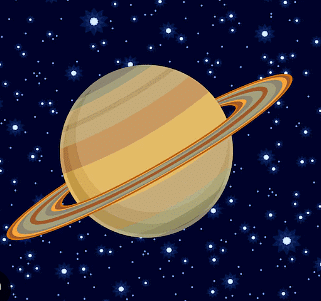Earth and Solar System Chapter Notes | EVS for Class 2 PDF Download
The Solar System
The solar system consists of planets, moons, comets, asteroids, and other objects that orbit around the sun. It is like a big family of planets, moons, asteroids, comets, and other objects that all orbit around a star called the Sun.
 Solar System
Solar System
Just like how Earth revolves around the Sun, there are other planets like Mercury, Venus, Mars, Jupiter, Saturn, Uranus, and Neptune, along with their moons, that also orbit around the Sun. It's kind of like a big cosmic dance where everything moves around the Sun because of its gravity.
The planet we live on, called Earth, is in the solar system. There are 7 other major planets that orbit around the Sun.
The Sun
It's the only star in the solar system. It provides light and heat to Earth. Its movement across the sky helps tell the time. It rises in the east and sets in the west.

Mercury (The Nearest Planet)
Mercury, the smallest planet in our solar system and the closest to the Sun, is only slightly larger than Earth's Moon.

Venus (The Hottest Planet)
Venus is Earth's closest planetary neighbor and the second planet from the Sun. It is sometimes referred to as Earth's twin because to its size. Even though Mercury is closest to the Sun, Venus is the hottest planet in our solar system.

Earth(Our Home)
Earth is our home planet; the third planet from the Sun, is the only place we know of that can sustain and support life.

Mars(The Red Planet)
Mars, a cold, dry, dusty planet with a thin atmosphere, is the fourth planet from the Sun.

Jupiter(The Largest Planet)
The largest planet in the solar system and the first gas giant from the Sun is Jupiter. All of the other planets in the solar system could fit inside Jupiter.

Saturn(Planet having a Ring)
The second-largest planet in our solar system, Saturn, is located at a distance of six planets from the Sun.

Uranus(The Coldest Planet)
The seventh planet from the Sun is Uranus.

Neptune(The Farthest Planet)
The fourth largest and eighth planet from the sun, Neptune is also a gas giant.

Pluto(The Dwarf Planet)
Pluto is a small, icy world that orbits far from the Sun. It's considered a "dwarf planet" because it's smaller than the main planets and shares its orbit with other objects.

The Moon
Our earth has one moon which revolves around the earth. The Moon of earth is also called its natural satellite. The moon does not have its own light.

Do you Know?
(i) Mercury, Venus, Earth and Mars are also known as inner planets. The planets which revolve closer to the sun are inner planets.
(ii) Jupiter, Saturn, Uranus and Neptune are known as outer planets of the solar system.
Movement of Earth
(i) Rotation of Earth
Movement of earth on its own axis is called rotation of the earth. Earth takes 24 hours to complete one rotation.(ii) Revolution of Earth
Movement of earth around the sun is called revolution of the earth. Earth takes 365 1/4 days to complete one revolution around the sun.
 Rotation and Revolution of Earth
Rotation and Revolution of Earth
Fun Facts About Solar System
- The Sun is a hot, bright star at the center of our solar system, and it's surrounded by eight planets, like Earth and Mars.
- The planets orbit around the Sun, but the Moon orbits around the Earth. Jupiter is the biggest planet, and Mercury is the smallest.
- Earth spins around itself, making one full turn in a day, and it takes 365 days to orbit the Sun, making a year.
- Our solar system is part of the Milky Way galaxy, where the Sun is just one of many, many stars.
- Some planets, like Mars, might have water, and comets are icy leftovers from when our solar system formed billions of years ago.
- Some planets, like Jupiter and Saturn, don't have solid surfaces to walk on.
|
28 videos|123 docs|47 tests
|
FAQs on Earth and Solar System Chapter Notes - EVS for Class 2
| 1. How many planets are there in the Solar System? |  |
| 2. What is the largest planet in the Solar System? |  |
| 3. How far is the Sun from Earth? |  |
| 4. What is the main source of energy in the Solar System? |  |
| 5. What is the order of the planets in the Solar System from the Sun? |  |

|
Explore Courses for Class 2 exam
|

|

















